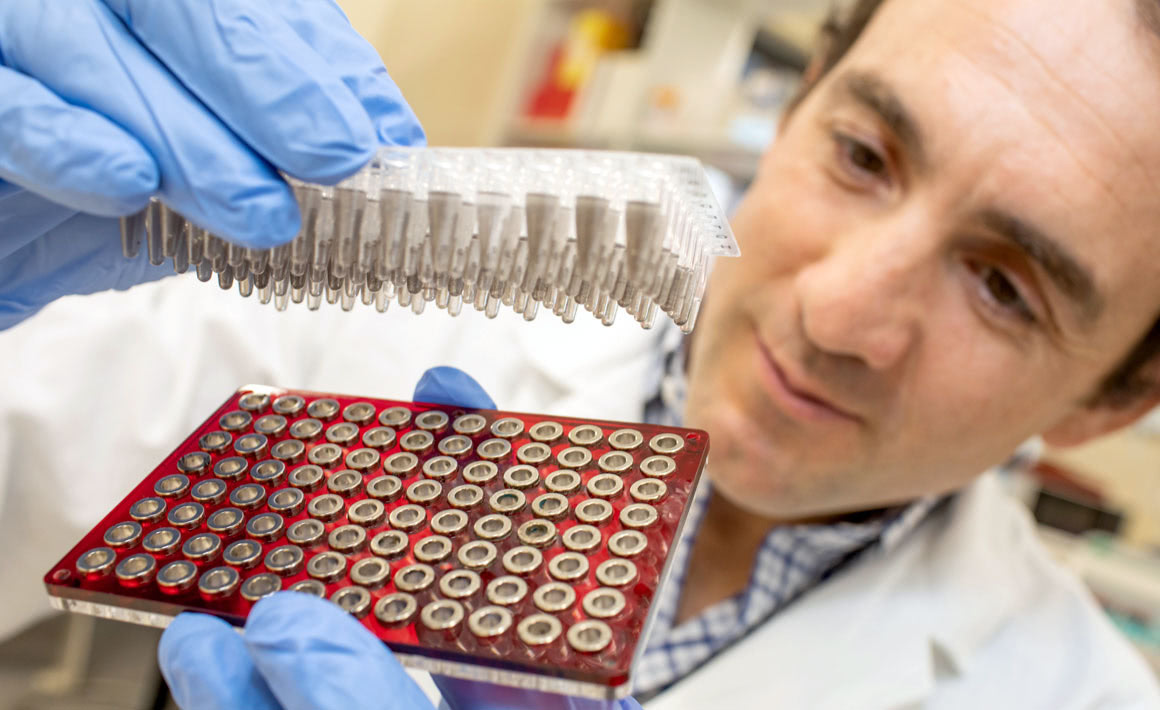 Dr Tim Hore: “If ever a reason is needed to support fundamental scientific research, this is it… our methods were rapidly picked up by diagnostic laboratories in their time of need.”
Dr Tim Hore: “If ever a reason is needed to support fundamental scientific research, this is it… our methods were rapidly picked up by diagnostic laboratories in their time of need.”Meeting a need for alternative methods to purify COVID-19's genetic material, Dr Tim Hore's magnetic nanoparticle protocol is now being used here in New Zealand and internationally.
With the worldwide demand for COVID-19 testing materials putting supply chains under severe threat of failing, Dr Tim Hore (Anatomy) and his team sprang into action to develop an alternative diagnostic technique using magnetic nanoparticles.
Last year Hore and colleague Dr Tomasz Jurkowski, from the University of Cardiff, published several protocols for isolating the genetic material of cells – a platform they called Bio-on-Magnetic-Beads, or BOMB. This was the first time magnetic nanoparticle methods had been openly-released to work on a wide variety of cell types and biological sources.
“Before developing this, we used to process samples one by one and they cost $4 to $5 per sample – so doing 100 DNA extractions might be $400,” says Hore.
“For that same $400 we could source enough magnetic nanoparticles to do 40,000 DNA extractions. So it made a huge difference to our lab.”
Fast forward to COVID-19: when the call went out from Dr Kylie Drake, at the Canterbury Health Laboratories, for alternative methods to purify the genetic material of the virus, Hore was ideally positioned to offer a solution that didn't require reagents coming in from overseas.
Within days he had sent all the reagents he had, enough for 50,000 to 100,000 purifications, and Drake went about getting that working on COVID-19 in a diagnostic lab.
“Although some tinkering was required to deal with swab collection media, the protocol basically worked straight out of the box.”
Hore's only stipulation about its use was that any development be made open and accessible so that others can benefit from it. The protocol is now being used in the UK, Europe, the United States and South America.
They are also developing methods that enhance testing resilience should supply chains falter. This includes synthesising magnetic particles, something PhD student Tim Moser worked day and night for weeks to perfect.
“It's working better than the previous protocols. Tim can make enough beads for 40,000 tests per day. That's a huge achievement.”
Hore says it all goes to show you can't always see the value in what you're doing until a new situation like this comes up.
“If ever a reason is needed to support fundamental scientific research, this is it. We usually study mice and fish, and are not funded for medical research – yet our methods were rapidly picked up by diagnostic laboratories in their time of need.”
Funding
Ministry of Business, innovation and Employment
Marsden Fund